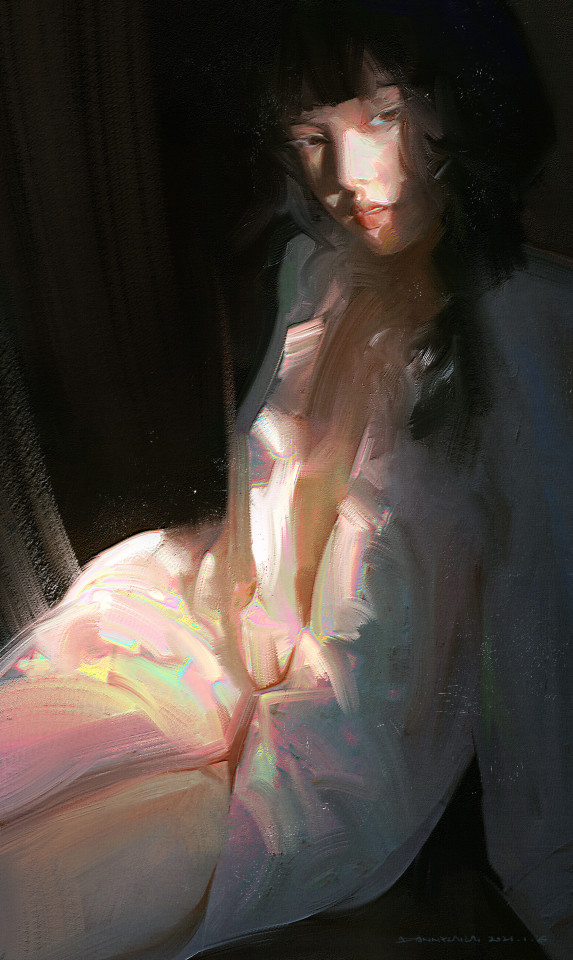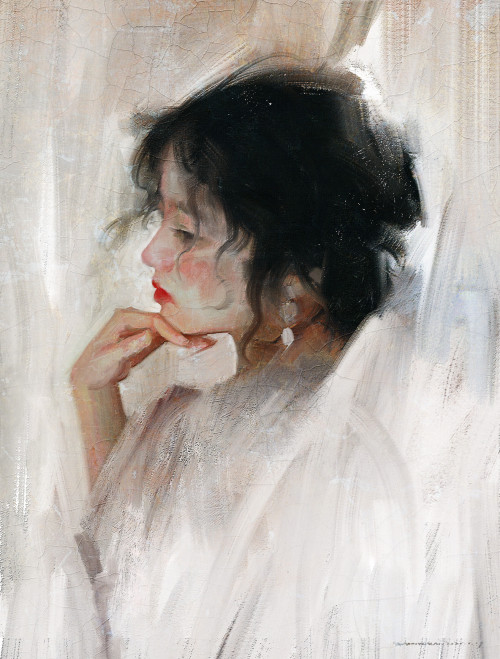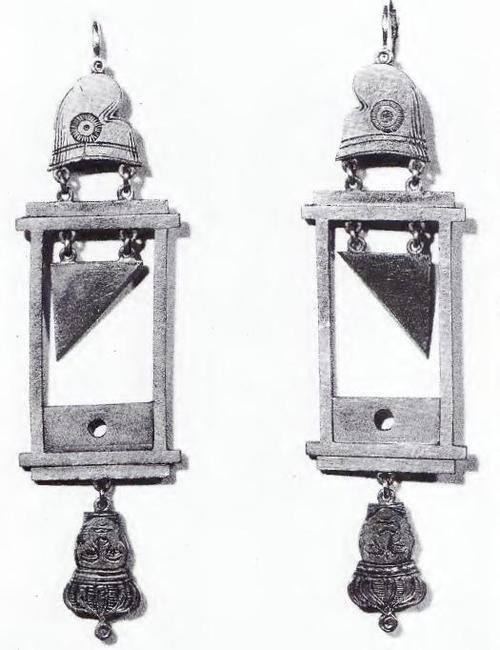Art By DannyLaiLai





Art by DannyLaiLai
More Posts from Yaboidiablo and Others
How can you tell if a "magic" book is full of it? I'm sure with experience you can, but what about beginners?
Reading these books needs a good ‘bullshit detector’. There are a few telling signs:
1) Look at the book’s bibliography. A bibliography can give you, if it’s a good one, the primary sources an author used, and can give you an idea of other books to read. A bad bibliography can save you time - if a book hasn’t got one, or it’s a very short one, or it references only other neo-pagan texts, it’s not going to be long on facts and you might be better off reading something else.
2) Magic and witchcraft aren’t inherently religious. If the book implies or states that a neo-pagan religion is necessary in order to practice witchcraft, it’s probably not worth the read.
3) If the book says it’s about a neo-pagan religion of some kind, but talks endlessly of spells instead, it’s probably a waste of your time if you’re looking for the religious practice first. Some neo-pagan faiths will involve practicing magic, but others don’t.
4) Neo-pagan books that talk about ancient matriarchal religions spanning Europe, a ‘Great Goddess’ and all that jazz, are based in the historical theories of Margaret Murray. They were all fairly thoroughly debunked, but it still lingers in neo-pagan circles.
5) Know that things like the ‘Triple Goddess’ and the Wheel of the Year are modern inventions - they aren’t ancient, and forcing ancient deities or practices into those concepts will not always work or be appropriate.
6) If the deities you’re reading about are described as being very different from their historical selves, it’s probably a good sign that author hasn’t done their home work very well.
7) ‘The Burning Times’ did happen - but it was not a systematic genocide of a pagan religion or practitioners of magic. What you had was a mass hysteria created by the church, and taken advantage of by greedy people. They had no qualms in killing unloved neighbours or relatives for their property, with witchcraft as a scapegoat. Maybe a few witches died - but so did thousands of Christians who were unfortunate enough to be disliked, or without family, or to be a better farmer or gardener. ‘Nine Million’ is certainly hyperbole, and is not factually accurate.
8) Be aware of things that don’t fit: for example, we have what’s called the ‘potato test’. Potatoes are not native to Europe and were not discovered until explorers began invading South America. So an author that talks about an ancient Irish potato deity, for example, is absolutely full of it.
9) Authors who are patronizing and talk down to their readers, no matter the subject, should be tossed on their ears. You’re a beginner, perhaps, but you’re not stupid and you’re not a child. You don’t need the author to coddle you or ‘simplify’ the information - their assumption that you do is just rude. If you wouldn’t let someone talk to you like that in real life, why would you read a book that does the same thing?
10) Whenever you can, space your neo-pagan or magical reading out with primary sources and proper non-fiction history and anthropology texts. A primary source is going to give you the closest thing to being there, at whatever time and place you’re looking at. Academic texts can be a chore to get through, but they’re going to give you the grounding you need to have a detector of your own.
Read what you can get your hands on. At first, like you said, it’s hard to tell the gold from the dross, but you’ll get the hang of it. A couple of really awful books will give you a guideline, and you’ll find authors you can trust vs. authors you can’t.
Read critically. Don’t be afraid to be a skeptic. Similar doesn’t equal same - cultures have similar concepts but it doesn’t make their gods or their practices the same thing with different names. If you think something sounds like horseshit or too good to be true, it probably is.
Good luck, and happy hunting. :>
Tasseomancy

For more go and check my Instagram.
What is tasseomancy?
Also known as tasseography or tassology, it’s an intuitive divination technique of reading tea leaves or coffee grounds. Images changes when viewed differently so depends on reader’s perceptions. Good tool to access subconscious.
Techniques
There are different ways to interpret which area of the cup corresponds with what. There are also special cups for divination with symbols painted on its inner surface. Check diagrams: 1. Rim to bottom layout where rim area is for present, sides for near future and bottom for far future. 2. 12 month layout where you divide cup into 12 areas, from left to right each is a further future. 3. Past/future layout where left side represents past and the right side future. 4. Importance layout - rim: most important; sides: relevant; close to bottom: rival, bottom: unlucky, right from handle: lucky. Those are not all possibilities!
Reading
Get mentally prepared. Meditate, focus on the preparation of the tea and the reading. Find calm place to perform.
You’ll need a cup with a light surface, loose tea or coffee ground, stove, kettle/pot and water. Place 1 teaspoon of tea leaves in a cup, bring water to a boil and pour over your tea. Steep for 3 to 5 minutes. Stir and let to settle. If you’re using coffee grounds first heat them in a pot, pour into your cup and let to settle.
Focus on your question while enjoying the drink. Leave a small sip of drink in the bottom of cup. Swirl the leaves three times and turn the cup upside down on the saucer to drain the liquid. Turn the cup back and examine. What do you see?



hey yall this is the 4th annual samhain giveaway!! winner will be decided October 30th, 2019, Samhain. 12:00 EST. i’ll message/inbox you, will ship international!
must be 18+ to enter!
need to be following this blog to win!
please don’t reblog to giveaway blogs please! (nor tag it as one)
winners will be chosen randomly by an online number generator
please answer within 24hrs or a new winner will be picked
H A P P Y S A M H A I N 👻
Where may I purchase a pair, please and thank you.

in the late 1790s it was in style to wear earrings depicting the execution of louis xvi.
I don’t want to detract from that post, but like- people not learning queer history is genuinely the source of so many of our problems in the queer community today.
It’s why people don’t understand the roots of the word “queer” in the first place, or why it’s important to so many people
It’s why people think “gay” is some apolitical neutral term with zero negative connotations, ever, for anyone
It’s why people actively feed into lesbian separatism, political lesbianism, and TERF movements without even knowing it
It’s why people think “LGBT” is some True Name that has never been changed, challenged, nor shaped over the years to better represent the community
It’s why people feed “who can reclaim which slurs” discourse without giving living human beings older than 25 any real consideration
It’s why people straight-up don’t know what the “drop the T” campaign was/is, or understand the troubled history between the trans community and the rest of the queer community
It’s why people don’t understand what “trans” used to mean, or how that meaning has changed over the years, or why
It’s why people don’t understand the differences between queer communities and identities by country, or often how they’re complicated by race
It’s why people don’t understand what “butch” and “femme” actually mean, the many definitions they can have, or how those labels have intersected across communities for decades now
It’s why people don’t understand the differences between the transfemme and transmascs communitys’ histories, or the differences in struggles they have- and then feed into those struggles without even realizing it
It’s why people straight-up recycle old homophobic and transphobic rhetoric, uncritically and unironically, as if they’ve discovered cool some new bigbrain hot take for the “super smart” gay kids
It’s why people treat these complicated, contradictory-sounding, or lesser-known identities like “trendy new ways to claim you’re oppressed”- without understanding the history behind those labels, and those communities, and that they’ve been here longer than any of these people have been alive.
Like… yes, we’re moving forward now. Things are changing, and in many ways, it’s for the better! But we seem to forget that most of our community was lost in the 80′s and 90′s, and those folks left a massive, gaping chasm behind.
We don’t have the same easy, communal roots to our history that we used to. And in order to rebuild that, we- the entire community- is going to have to do some work to learn it and teach it and move forward with it in mind.

BEST WITCHY BOOKS FOR THE BEGINNER WITCH
Buckland’s Complete Book Of Witchcraft - This book is a most have in every Wiccan’s collection because of how informative it is. I highly recommend this book to really every witch who hasn’t read it yet.
The Modern Guide to Witchcraft: Your Complete Guide to Witches, Covens, and Spells - This book is a nice add to a baby witches collection, for how simple of a read it is. Not to mention how aesthetically pleasing it is.
Wicca: A Guide for the Solitary Practitioner - This book is also a very nice read, it has a perfect amount of information where you wont get information overload too quickly. Its unbiased and offers a great first start to starting the craft.
Wicca: by Harmony Nice - If you are a complete newbie to Wicca or the craft, then this is the book for you. This book is easy to swallow, and offers easy to understand information for newbies without being too difficult to process.
Of Witchcraft and whimsy - I think this is the book for newbies who want to seek the more modern practices of witchcraft. This is a book that focuses more on the craft than Wicca itself. It is also complete with plenty of unique and fun spells perfect for beginner level.
Pastel Spells - A perfect book for newbies looking to try out spells of all types at a beginner level.
The Green Witch - Perfect for a beginning green witch, this book is complete with all the basics of Green magick complete with the correspondences of herbs and food, recipes, and basic practices and morals of a green witch.
Spellcrafting: Strengthen the Power of Your Craft by Creating and Casting Your Own Unique Spells - Perfect for a new witch looking to formulate their own unique spells.
The Modern Herbal Dispensatory: A Medicine-Making Guide - Perfect for new witches looking to expand their knowledge on herbalism.
The Modern Witchcraft Guide to Magickal Herbs: Your Complete Guide to the Hidden Powers of Herbs - Beautifully illustrated guide to herbs and their magickal properties.
The Witch’s Herbal Apothecary:Rituals & Recipes for a Year of Earth Magick and Sacred Medicine Making - Perfect for the beginning witch interested in herbalism, ands its all around a pretty little book.
How to Create a Prosperity Bowl
by Oma, Open Minded Witch of the Valley
What You Need:
7 coins
1 key (at least)
Salt
Bowl

What You Do:
Place the bowl before you and say:
"This bowl is a vessel of prosperity. What I place within its depths shall grow."
Place the coins in the bowl one by one, saying each time:
"By this coin, my prosperity grows."
Sprinkle the salt atop the bowl, including the coins, saying as you do so:
"With this salt, my wealth grows."
Place the key in the bowl and say:
"With this key, my opportunities grow."
Now place the bowl on your altar or on a mantelpiece, somewhere central and important where you will see it often. Periodically toss in loss change, repeating the above blessings every time.
My your prosperity, wealth, and opportunity grow. Blessed be.
Gonna charge my crystals under my kitty from now on 😂
(Source)
-
 aawawawaa reblogged this · 4 weeks ago
aawawawaa reblogged this · 4 weeks ago -
 babybunnywings liked this · 1 month ago
babybunnywings liked this · 1 month ago -
 duchessie reblogged this · 1 month ago
duchessie reblogged this · 1 month ago -
 skycu reblogged this · 1 month ago
skycu reblogged this · 1 month ago -
 skycu liked this · 1 month ago
skycu liked this · 1 month ago -
 pinkhairdyeagain reblogged this · 1 month ago
pinkhairdyeagain reblogged this · 1 month ago -
 nomaadic-soul liked this · 1 month ago
nomaadic-soul liked this · 1 month ago -
 otto-wood liked this · 1 month ago
otto-wood liked this · 1 month ago -
 cutiepuff reblogged this · 1 month ago
cutiepuff reblogged this · 1 month ago -
 candlesoul liked this · 1 month ago
candlesoul liked this · 1 month ago -
 candlesoul reblogged this · 1 month ago
candlesoul reblogged this · 1 month ago -
 cyberkitten liked this · 4 months ago
cyberkitten liked this · 4 months ago -
 thefrozenseainsideus reblogged this · 4 months ago
thefrozenseainsideus reblogged this · 4 months ago -
 fear-the-voices reblogged this · 5 months ago
fear-the-voices reblogged this · 5 months ago -
 six-six-sensei liked this · 5 months ago
six-six-sensei liked this · 5 months ago -
 blog-de-segunda reblogged this · 5 months ago
blog-de-segunda reblogged this · 5 months ago -
 blog-de-segunda liked this · 5 months ago
blog-de-segunda liked this · 5 months ago -
 kawaiidesu reblogged this · 5 months ago
kawaiidesu reblogged this · 5 months ago -
 kawaiidesu liked this · 5 months ago
kawaiidesu liked this · 5 months ago -
 love-nakamura liked this · 5 months ago
love-nakamura liked this · 5 months ago -
 nopenopeinope reblogged this · 5 months ago
nopenopeinope reblogged this · 5 months ago -
 tophlovesbeer liked this · 6 months ago
tophlovesbeer liked this · 6 months ago -
 femmematisse reblogged this · 6 months ago
femmematisse reblogged this · 6 months ago -
 gracioushd liked this · 6 months ago
gracioushd liked this · 6 months ago -
 cat755 liked this · 6 months ago
cat755 liked this · 6 months ago -
 knifemedusa reblogged this · 6 months ago
knifemedusa reblogged this · 6 months ago -
 trash-fragments liked this · 6 months ago
trash-fragments liked this · 6 months ago -
 bleeding-heartbutch reblogged this · 6 months ago
bleeding-heartbutch reblogged this · 6 months ago -
 justsomeone4-blog liked this · 6 months ago
justsomeone4-blog liked this · 6 months ago -
 revitalizationrat liked this · 6 months ago
revitalizationrat liked this · 6 months ago -
 alexhorus liked this · 6 months ago
alexhorus liked this · 6 months ago -
 22mar-yory liked this · 6 months ago
22mar-yory liked this · 6 months ago -
 child-of-persephone reblogged this · 7 months ago
child-of-persephone reblogged this · 7 months ago -
 graveeatingtrashbag liked this · 7 months ago
graveeatingtrashbag liked this · 7 months ago -
 ahomatsuri liked this · 7 months ago
ahomatsuri liked this · 7 months ago -
 towardthehurricane reblogged this · 7 months ago
towardthehurricane reblogged this · 7 months ago -
 towardthehurricane liked this · 7 months ago
towardthehurricane liked this · 7 months ago -
 halloweenhooves liked this · 8 months ago
halloweenhooves liked this · 8 months ago -
 vulnerableparts reblogged this · 9 months ago
vulnerableparts reblogged this · 9 months ago -
 mom12342365yui76 liked this · 9 months ago
mom12342365yui76 liked this · 9 months ago -
 pastel--lilac liked this · 10 months ago
pastel--lilac liked this · 10 months ago -
 vinhotintoseco liked this · 10 months ago
vinhotintoseco liked this · 10 months ago -
 sharklilly liked this · 10 months ago
sharklilly liked this · 10 months ago -
 internetspiders reblogged this · 10 months ago
internetspiders reblogged this · 10 months ago -
 flowerpetalsandhoney reblogged this · 10 months ago
flowerpetalsandhoney reblogged this · 10 months ago -
 fogandfireflies liked this · 10 months ago
fogandfireflies liked this · 10 months ago -
 k1dsbymgmt reblogged this · 11 months ago
k1dsbymgmt reblogged this · 11 months ago


